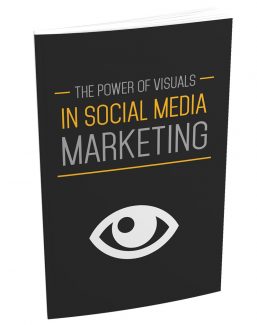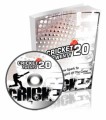 License Type: Master Resell Rights
License Type: Master Resell Rights  File Type: ZIP
File Type: ZIP
 SKU: 63881
SKU: 63881  Shipping: Online Download
Shipping: Online Download
Sample Content Preview
The Power of Visuals in Social Media Marketing
- Special Report –
The Power of Visuals in Social Media Marketing
Capture Short Attention Spans - Stand Out From the Crowd - Enhance Your Social Marketing Message
Trying to succeed on social media is a little bit trying to get your voice heard in a room filled with people speaking loudly and all fighting for attention.
That’s pretty much precisely what social media is – a platform where a whole lot of individuals and companies will fight for the attention of the masses and do whatever they can to stand out from the crowd.
This is what has led some brands to resort to some pretty underhanded tactics. Enter the ‘clickbait title’. This is a title used in social media that is so outrageous or shocking or mysterious that people feel they absolutely must click it and can’t pass up the opportunity to find out what it is really all about.
Of course, this being clickbait, they are almost always left with a feeling of disappointment when they find that the content really doesn’t deliver on its promise and generally offers very little of value.
So then, what can you do to stand out and make more of an impact? What can you do that doesn’t mean tricking your reader or selling them short in terms of value?
How can you get more attention while actually enhancing your value proposition and raising the class of your brand?
The answer is to use the right visuals. And that means bold, dynamic, beautiful images that are striking and that grab attention. That means using images that are well shot and that can’t help but draw the eye.
And you’re going to learn how to do that right here.
The Role of Visuals in Social Media
Visuals play a very important role in multiple aspects of social media.
For starters, a lot of what you will be sharing from your social accounts is likely to be blog posts, articles and other forms of content. It is normal – and actually practically a requirement – that this content be adorned with images.
The alternative is that your visitors land on your website and are greeted by a wall of plain text. This can be a highly off-putting and especially in a world where people don’t have much time and where there is a whole lot fighting for their attention.
Breaking this up with images serves multiple roles.
Firstly, it increases the production value of your page. This adds just that small amount of detail that makes the page look like it was created by an organization with skill, talent, equipment and funds – rather than looking like something someone made on their Mum’s computer.
At the same time, the right image breaks up the text and makes the page much more welcoming. But what it also does, is to add narrative. Images tell stories. In fact, you’ve probably heard the old adage that an image can convey ‘a thousand words’. And what this means, is that your image will help to convey more meaning immediately in much the same way that gesticulations and expressions help us to communicate more with our words.
Now when someone lands on your page, they will be instantly more aware of what the subject matter is, what the tone is and how they should feel. This instant reaction tells them whether they should stay, or whether they should leave.
And what achieves this same end to an even greater effect is having an ‘infographic’. Those that work online will have a better idea about what this means, but in short, an infographic is an image that also conveys information. This can mean data plotted and displayed in a very interesting way, it can mean a kind of visual mind-map or chart or it can mean a host of other things.
Either way, an infographic will allow you to put across a whole lot of information more quickly and these – as it happens – are highly sharable.
Images for Clicks
Images do more than this though. As well as convey meaning, they also convey and invoke emotion. That is to say that an image can make us feel something.
And unlike writing, an image can make us feel something instantly. We might feel that something is very awesome instantly, or we might feel that something is inspiring, desirable or even disgusting.
So, if you want your content to have a gut reaction then a great image can do that. Remember: when you place an image on your content, one of these will be shared when someone clicks to share your content.
And if your content has the effect of creating a strong emotional reaction, then of course people are going to stop and notice what has been posted and therefore be considerably more likely to click and read.
And guess what, it goes even further than this because what many people don’t realize, is that a lot of people will actually click ‘like’ or click ‘share’ before they have even read the content.
People are lazy and impulsive. A lot of us don’t have time to read but if we see something that looks funny, looks cool, or we think will make us look smart, then we might click like or share on a whim before we’ve even actually checked it out.
So, your image can get shared on its strength alone.
Note: In terms of images that are best at catching our attention, psychologists unanimously agree we are most likely to look at people’s faces. Attractive faces? Now that’s just a bonus. Better find some model friends!
And of course, the image can be the content itself.
This is much more likely to be the case on Instagram of course but it can also be the case on Twitter or on Facebook even. It’s certainly the case on Pinterest too!
Here the image itself must provide value. And that’s where things get a little trickier.
Infographics of course get around this problem inherently, as do memes. And what you can also do is to use images that contain the kernel of a useful tip – for instance an image of a lifehack or a smart décor tip.








